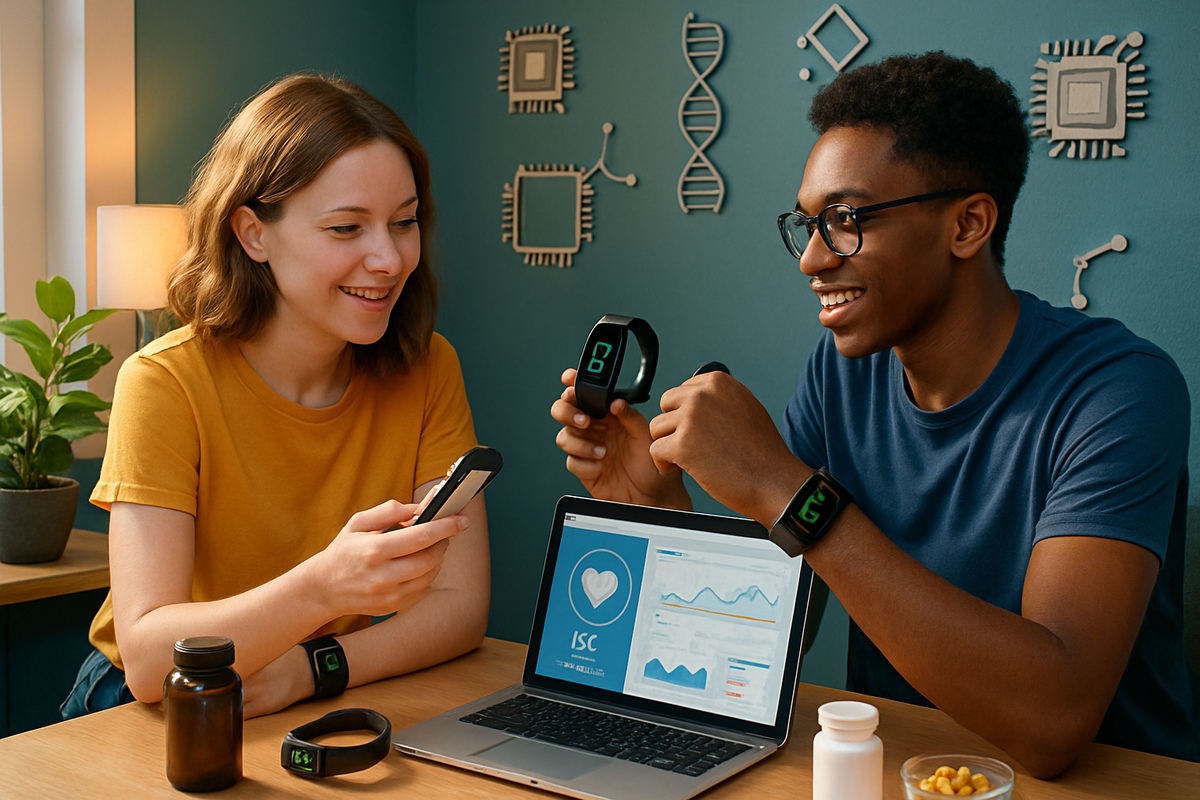The Rise of DIY Human Enhancement: How Everyday Tech is Turning Us All Into Biohackers
Biohacking is no longer a Silicon Valley fever dream. It's a grassroots revolution, with ordinary people using high-tech tools and DIY methods to optimize their lives. Ready to join this bold experiment or just curious about the future? Dive in.

Welcome to the Age of the Everyday Biohacker
Picture this: It’s 2025, your best friend just injected a glucose sensor in their arm, your neighbor is raving about their new brain-zapping headband, and your group chat is debating whether blue-light blockers or NAD+ boosters will help you live to 120. No, you haven’t fallen into a Silicon Valley fever dream—this is the new mainstream.
“Biohacking is no longer the exclusive playground of billionaire CEOs and mad scientists. It’s a global, grassroots movement—and you’re probably already part of it.”
The DIY Revolution: From Labs to Living Rooms
According to recent industry reports, the biohacking market is projected to skyrocket from $24.5 billion in 2024 to over $111 billion by 2034 (GlobeNewswire, May 2025). What’s fueling this wild ride? Not just elite labs, but millions of regular folks—tinkerers, gym rats, data nerds, and the endlessly curious—using off-the-shelf tech, supplements, and their own bodies as the ultimate test labs.
What Exactly Is DIY Biohacking?
- Wearables: Smart rings, watches, and continuous glucose monitors that track everything from sleep cycles to stress hormones.
- Nootropics & Smart Supplements: Over-the-counter (and sometimes sketchier) brain boosters, energy enhancers, and “longevity” cocktails.
- Implantables & Neurotech: Subdermal chips, RFID tags, and brain-stim gadgets—yes, some people really do self-implant!
- Open-Source Bio: Community labs, DIY CRISPR kits, and Discord servers where biohackers swap protocols and results.
- Apps & Online Communities: Crowdsourced experiments, digital health trackers, and viral Reddit threads that turn health optimization into a team sport.
The Wildest (and Most Popular) Hacks of 2025
Let’s peek into the biohacker’s toolbox. Warning: Some of these hacks are ingenious; others are, frankly, bananas.
1. Metabolic Tracking for the Masses
Continuous glucose monitors (CGMs) and wearable rings are now as common as fitness trackers. Users swap notes on how their blood sugar spikes after oat milk lattes or which late-night snack sabotages their deep sleep. Real-time data means real-time tinkering—sometimes with spectacular (or spectacularly weird) results.
2. DIY Nootropic Stacks
Forget plain old coffee. Today’s cognitive optimizers are microdosing everything from mushroom blends to racetams, or mixing their own “stacks” based on Reddit reviews and podcast gurus. Some even use apps to log their mood, memory, and productivity daily, turning brain enhancement into a personal science experiment.
3. Neuro-Stimulation Gadgets
Headbands that zap your prefrontal cortex to boost focus. Ear clips that promise better sleep. Devices you can buy online—no prescription required—are turning neurotech into a living room ritual. Are they life-changing? Sometimes. Are they safe? Well…that’s where things get complicated.
4. Self-Implantable Tech
RFID chips for unlocking your door with a wave of your hand. LED lights under your skin. If it sounds like sci-fi, welcome to the “grinder” subculture. These pioneers (or daredevils) perform their own body mods, sometimes livestreaming the process—much to the horror (and fascination) of their followers.
5. Crowdsourced Longevity Experiments
From supplement mega-stacks to fasting protocols, thousands are joining online “n=1” studies, sharing data and results in real time. Some communities even pool resources to fund group genetic testing or bulk-buy experimental peptides. It’s like a clinical trial, minus the lab coats and institutional oversight.
Why Is DIY Biohacking Exploding?
- Tech is Cheaper (and Sexier): You don’t need a PhD or a million bucks to play. Wearables and gene kits are cheaper than a new phone.
- Healthcare is Frustrating: Tired of waiting for a doctor’s appointment? The DIY crowd is taking matters into their own hands—sometimes literally.
- Communities Are Global: Reddit, Discord, and Telegram groups mean you’re never far from advice, encouragement, or a bit of healthy competition.
- We All Want to Feel Superhuman: Who doesn’t want more energy, a sharper mind, or a shot at living to 120?
But Wait—Is It Safe?
Let’s be real: Not every hack is a good idea. Some are just expensive placebos. Others can be risky—or even dangerous—without proper guidance. As Jie Li and colleagues noted in their 2025 review (arXiv:2503.09987), the ethical and security risks of self-augmentation are growing as fast as the tech itself.
“Responsible innovation and ethical frameworks are not optional—they’re essential as DIY biohacking goes mainstream.”
- Always research before you tinker.
- Understand your own limits—and your body’s.
- Consult medical professionals before trying anything invasive or radical.
- Beware of hype and miracle claims.
The Future: Will We All Be Biohackers?
The lines between tech enthusiast and biohacker are blurring. As wearables, apps, and supplements invade every corner of our lives, the question is less “will you biohack?” and more “how far will you go?”
With the market booming and new gadgets dropping every month, expect biohacking to get even more personal, accessible, and—yes—controversial. Will you be the person who optimizes breakfast for mitochondrial efficiency? Or the one who just wants a better night’s sleep? Either way, the tools are already at your fingertips.
Join the Conversation—And the Experiment
Curious? Skeptical? Already sporting a smart ring or microchip?
Only Funaix subscribers can read and write blog comments, swap stories, and get the latest smart news and perks. Subscribing is free—for now! Don’t miss out on the wildest human experiment of our time.
This article was published on August 16, 2025. For sources and further reading, see GlobeNewswire (May 2025), arXiv:2503.09987, and other cited studies.




